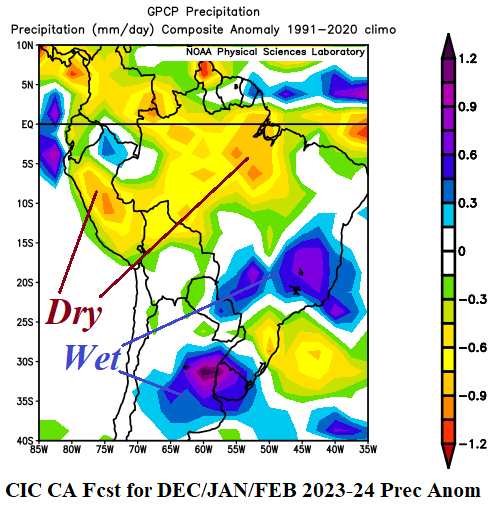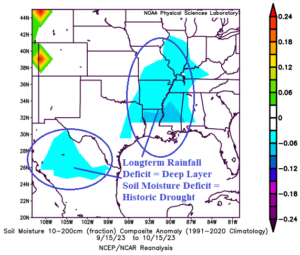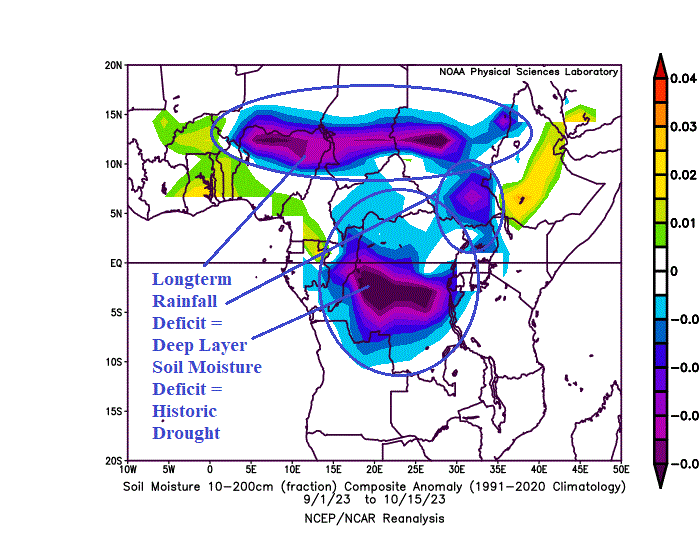
Amazon River at Manaus Lowest in Over 100 Years as Drought Worsens
10/17/2023, 5:26 pm EDT
South America Alert: Central Brazil Drought Ahead; Wet Climate Backs Into Northeast Argentina
10/22/2023, 10:11 am EDT



Fig. 1-4: Deep layer (10-200 CM) soil moisture deficits are due to long-term lack of rainfall and indicators of ongoing drought with potential for historic drought.
Discussion: Deep layer (10-200 CM) soil moisture deficits are often caused by lack of rainfall over a lengthy (at least 9 months) time-period. This condition generally involves drought development at the surface and potential for flash drought if a dry and anomalous hot weather pattern settles over the area. Dramatic events are inspired by these conditions. Recent examples are the lowest water level on the Amazon River in over 100 years at Manaus, Amazonas; continued 4-8 feet below “low water” levels on the central and south-central Mississippi River, rapidly developing dryness in Eastern Australia after the driest September in a century, and long-term rainfall deficits leading to potential worsening drought in both north and south tropical Africa. The northern South America drought is linked to the warming SSTA off the northwest coast of South America in 2023 caused by El Nino. The Mid-south U.S. dryness is linked to the summer of 2023 titanic subtropical ridge over Mexico and extending northeastward. After several wet years linked to a La Nina climate the reversal to an El Nino climate in 2023 is drying-out Australia fast. The Africa drought may be related to exceptionally warm SSTA either side of tropical Africa in 2023 leading to stronger nearby subtropical ridging.
![Climate-Impact-Company-logo-sm[1]](https://climateimpactcompany.com/wp-content/uploads/2023/08/Climate-Impact-Company-logo-sm1.png)
